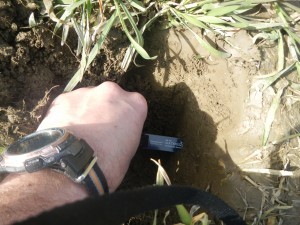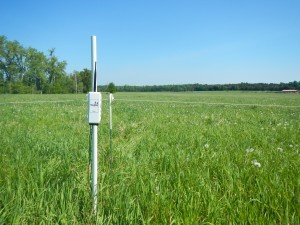As predictions for the Northeastern U.S. suggest wetter, warmer climate in the near future, the use of technology such as precision agriculture can be of great use to enable a more sustainable modern day farming.
One of the tools the UVM Extension Center for Sustainable Agriculture is using to evaluate, for among other things, the most appropriate moment to graze, are soil moisture sensors (SMS). They can track real-time water movement and record information that can be instantly viewed on a computer or a smartphone.
Soil moisture varies depending on soil types, precipitation and temperature. Soil moisture devices can be used under several ground cover conditions, and can help create moisture maps of the areas by the use of global positioning systems (GPS) at any given time in the season.
By using devices such as SMS, farmers are able to make real-time decisions about where they will place their animals or establish crops without causing soil compaction or destroying ground cover.
In 2015, we installed three-SMS at Health Hero Farm in South Hero, Vermont as part of a 3-year USDA NRCS funded research. Farmer Eric Nöel, who grazes about 80 cows at at Health Hero, welcomes cutting-edge research that can help him and other farmers take instant action on farm management decisions. Nöel understands that placing animals or running machinery on wet soils can quickly aggravate soil physical conditions like structure, compaction and infiltration.
We look forward to presenting results from this project as we go on. In the meantime:
- Please visit here for more information about this research project.
- Please visit here for more about the Center’s Pasture Program.

Farming & Climate Change Coordinator Joshua Faulkner places a Soil Moisture Monitor in a Health Hero Farm pasture
